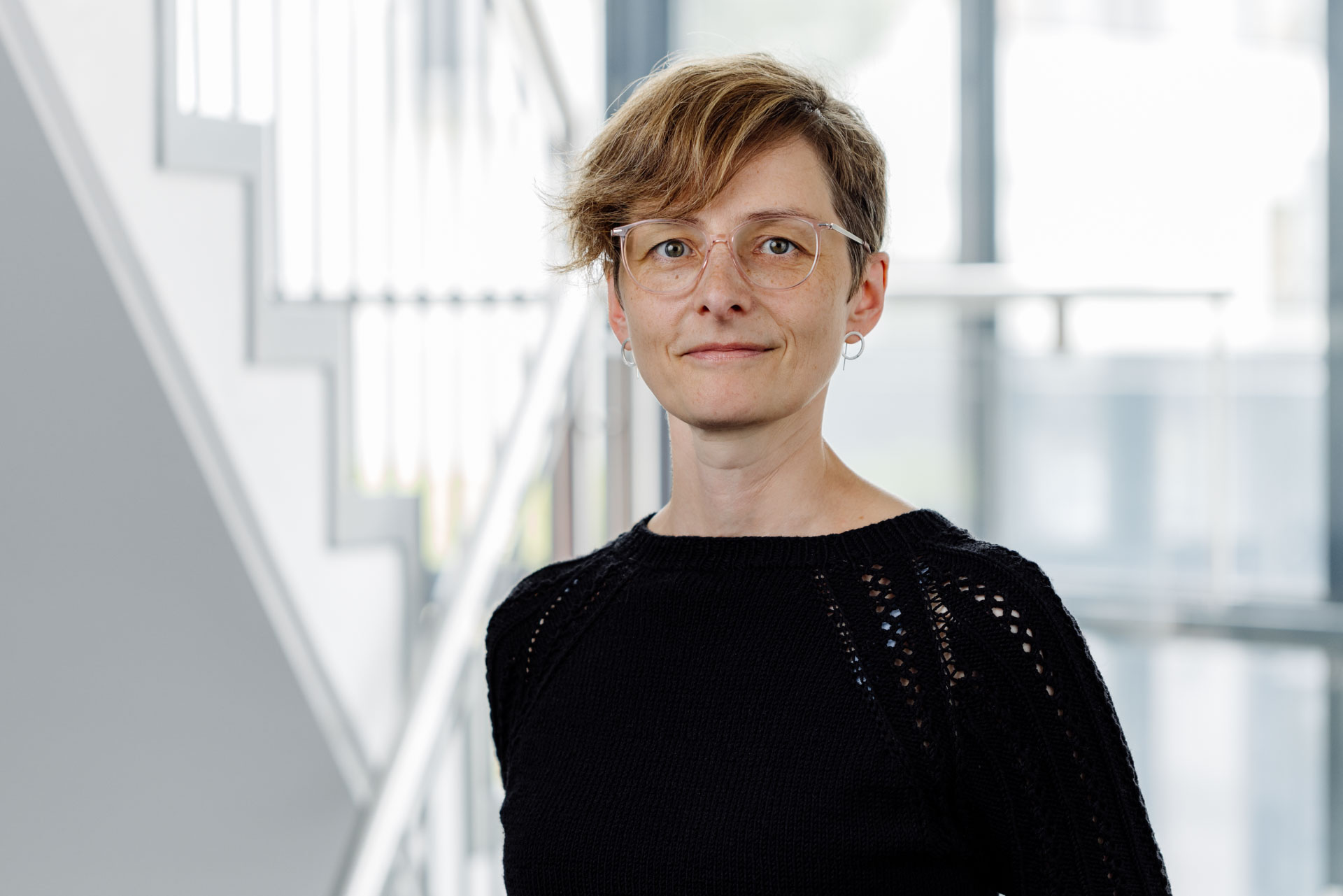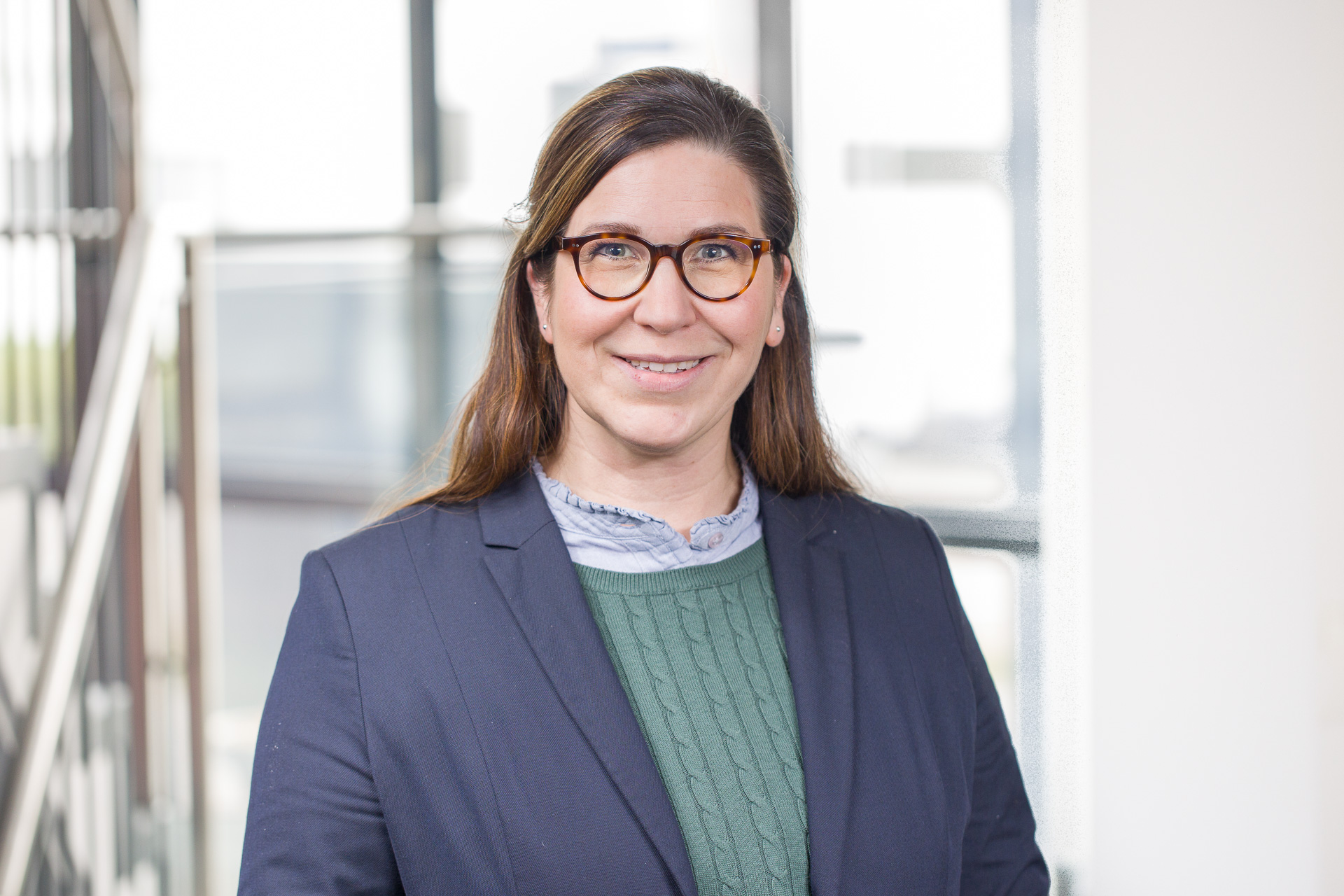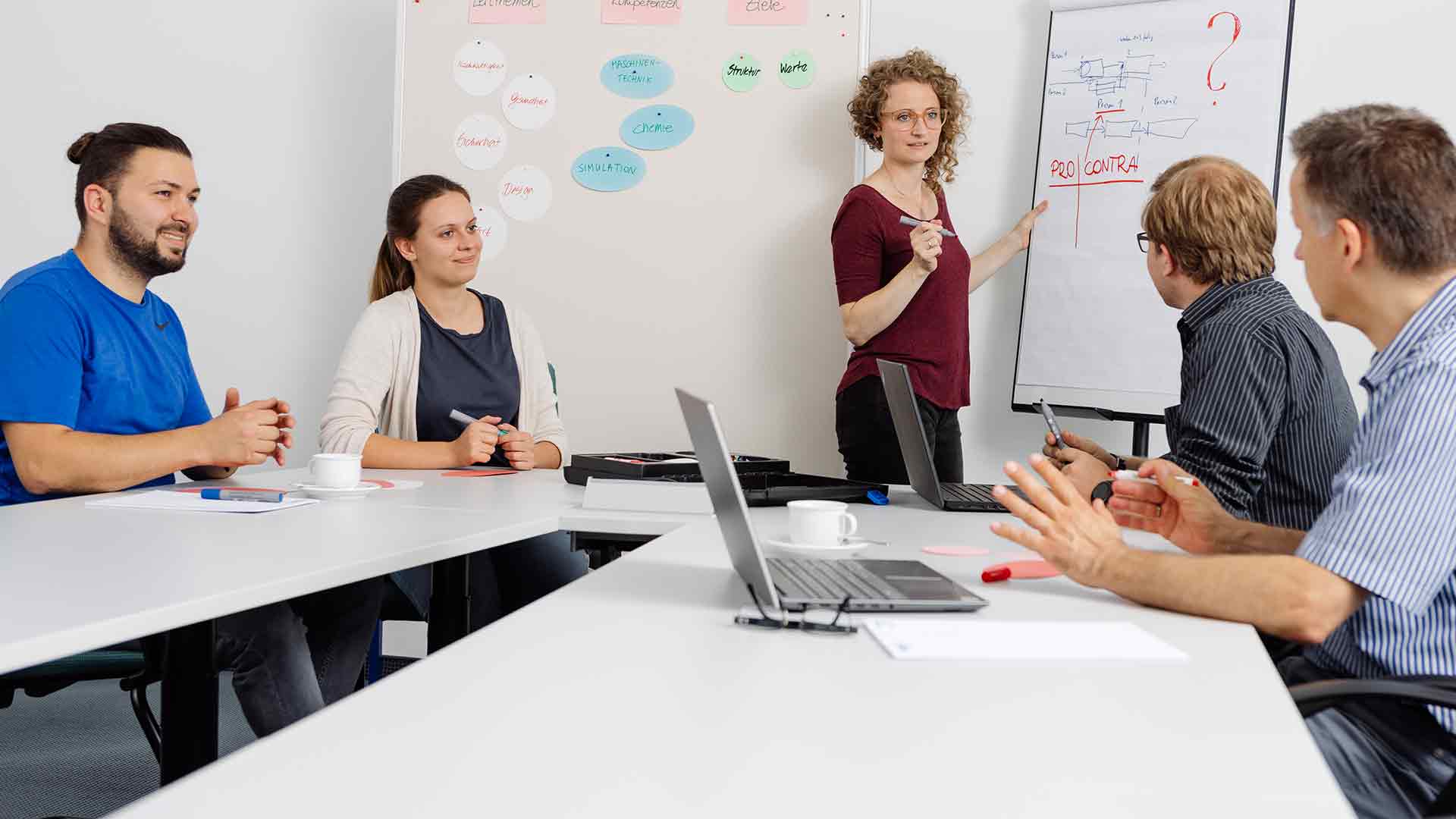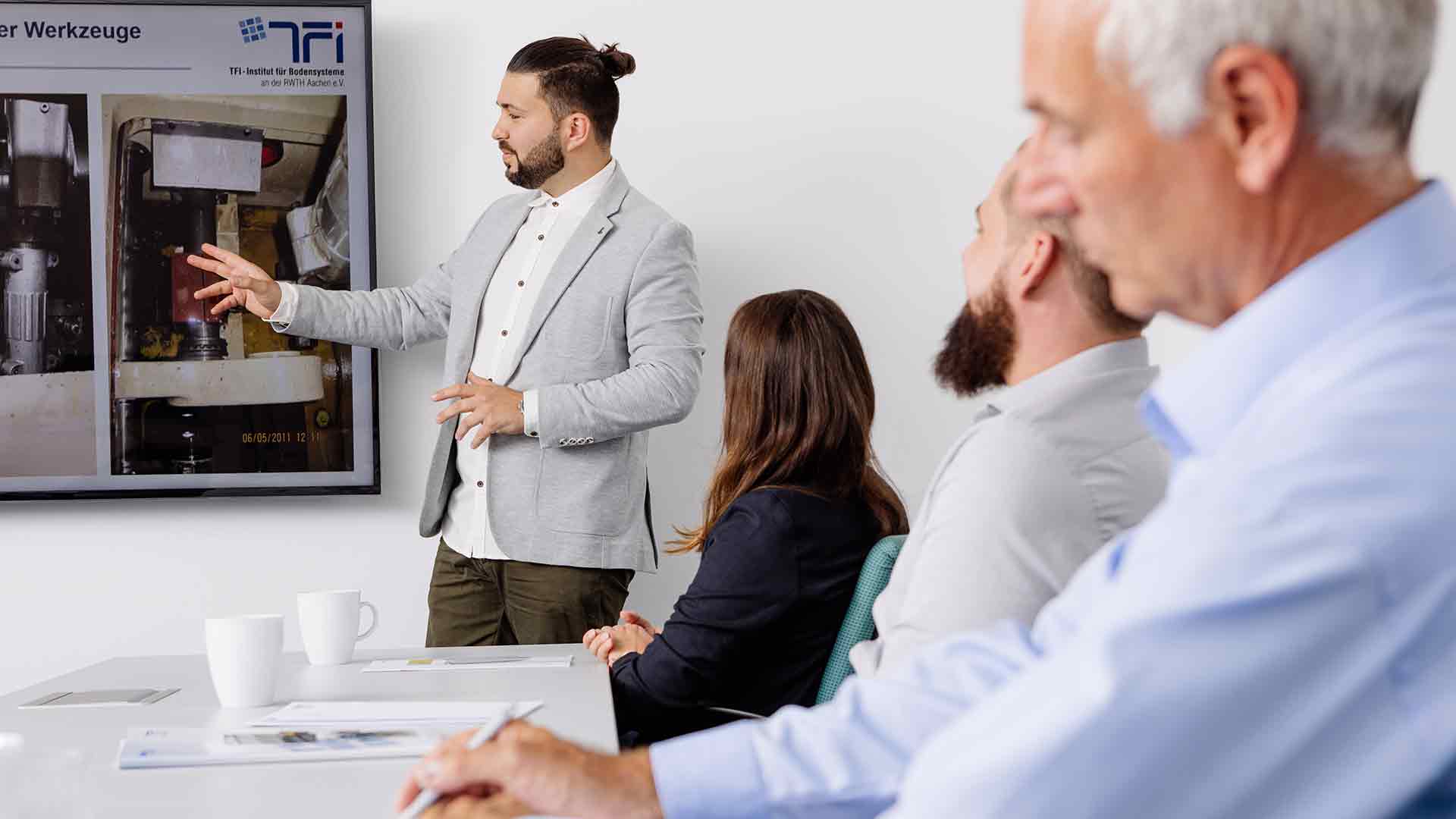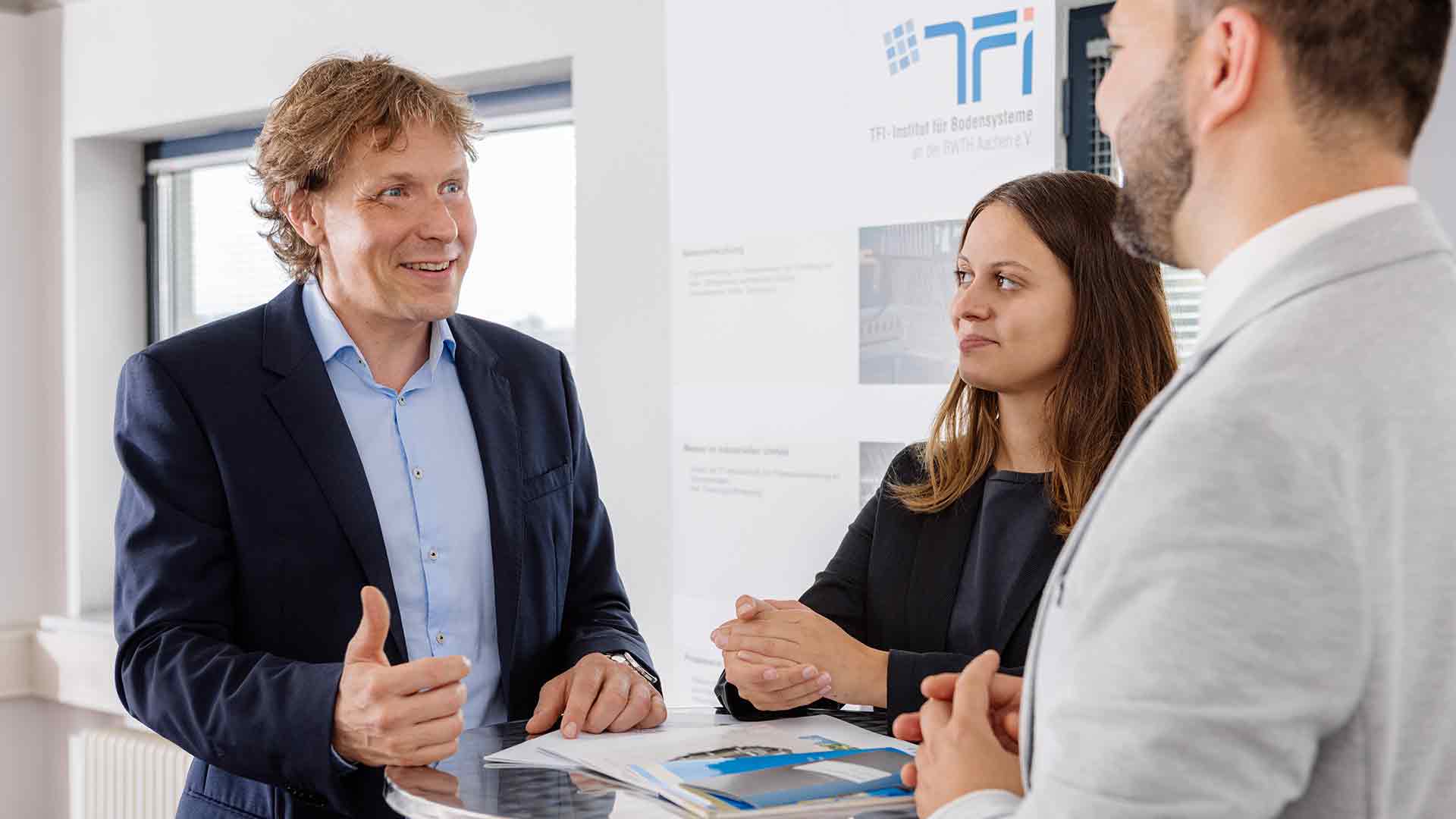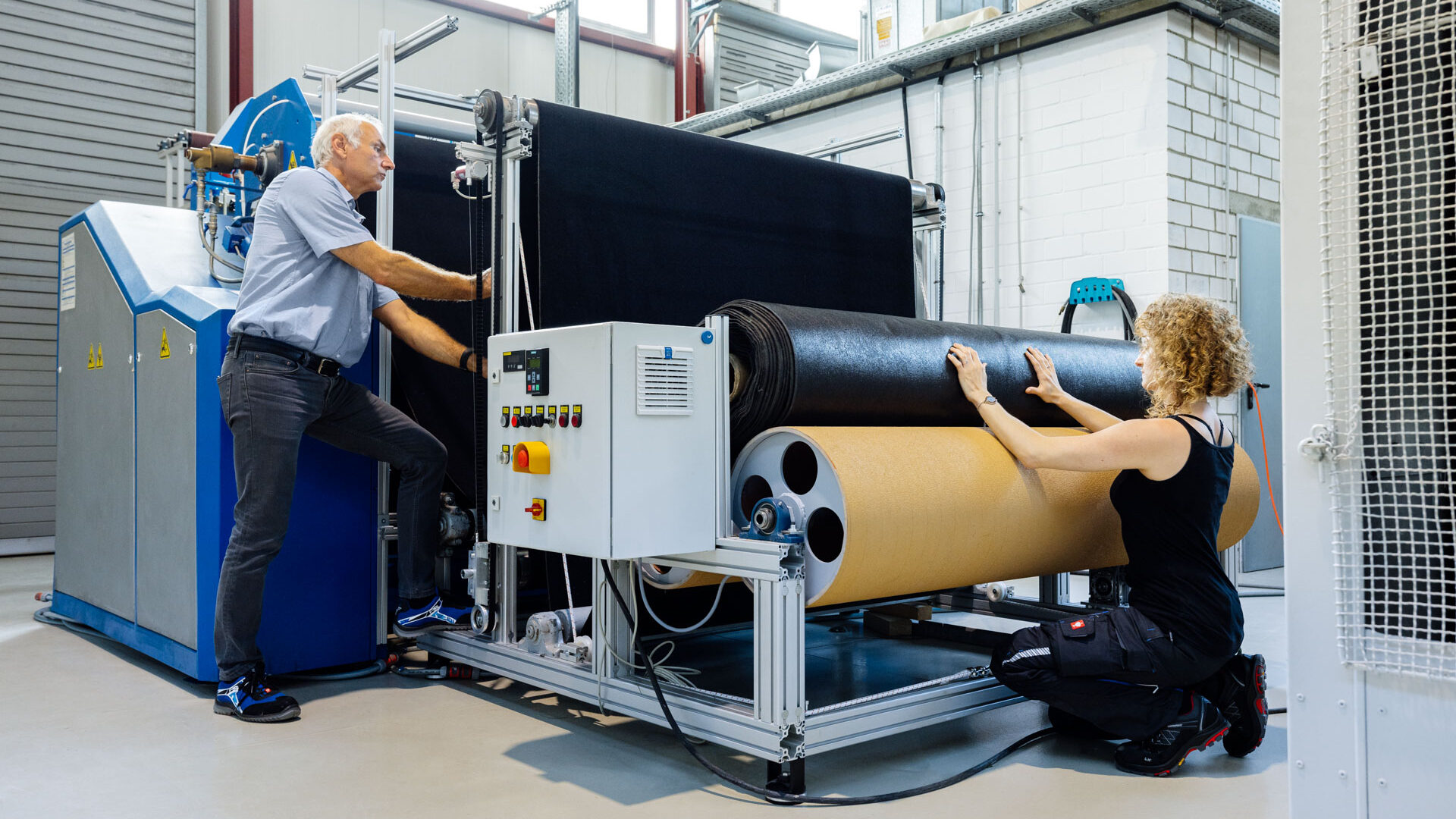
Technologies
Using their scientific knowledge, our researchers develop innovative technologies to transform raw materials and semi-finished products into finished building products. Building products such as floor coverings are manufactured in a series of process steps. With our know-how, we develop alternative materials, semi-finished products, products and processes in cooperation with our partners to meet future requirements for healthy, sustainable and safe building products.
Yarn Development
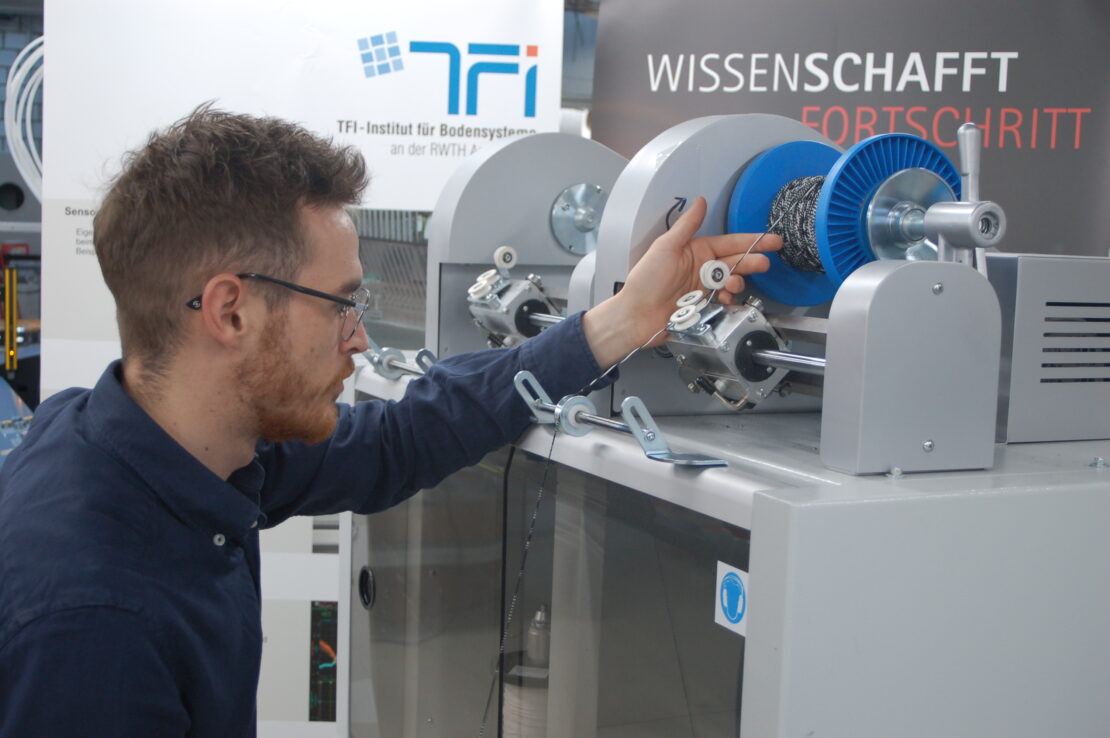
The "one-dimensional" yarn is usually the starting material for a textile two- or three-dimensional structure. It can be described by a multitude of parameters, which together determine the product properties. For the yarn finishing process (twisting, winding or cabling), we research combinations of materials for novel yarn characteristics. This enables us to develop modern products and textile structures with novel properties.
Learn moreTufting Technology
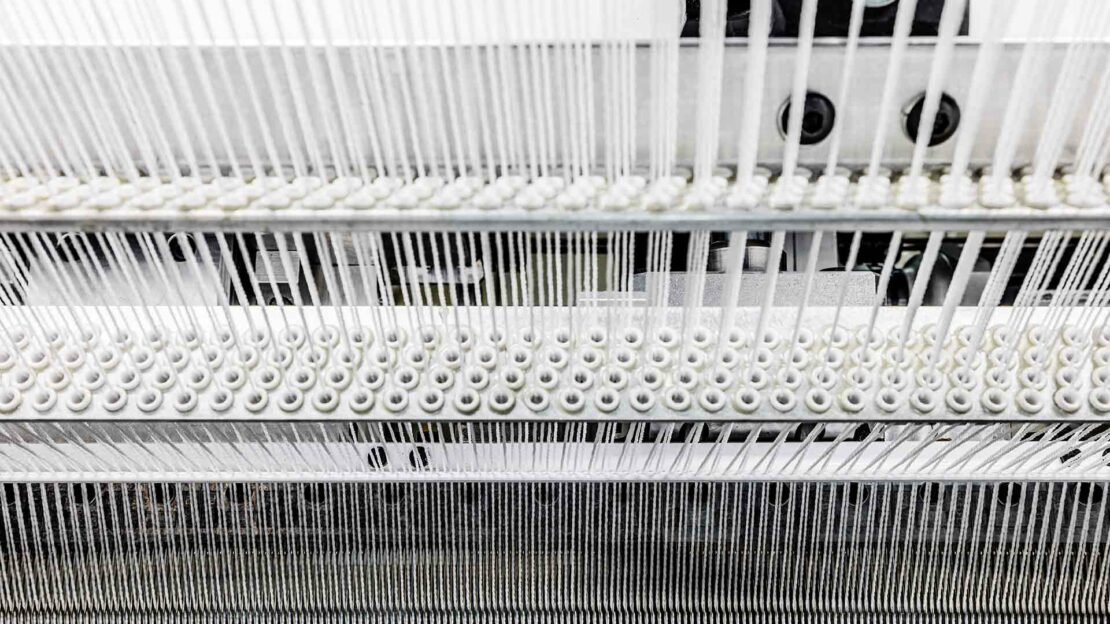
The aim of our research and development in the field of tufting technology is to improve the reproducibility and the flexibility of the process. We also want to open new, technical areas of application for tufted 3D structures. To this end, we are developing new machine elements and applying modern materials such as fibre-reinforced plastics. We demonstrate our results on our laboratory equipment and pilot tufting machines. In close cooperation with our industrial partners, we transfer these solutions to commercial production.
Learn moreShearing
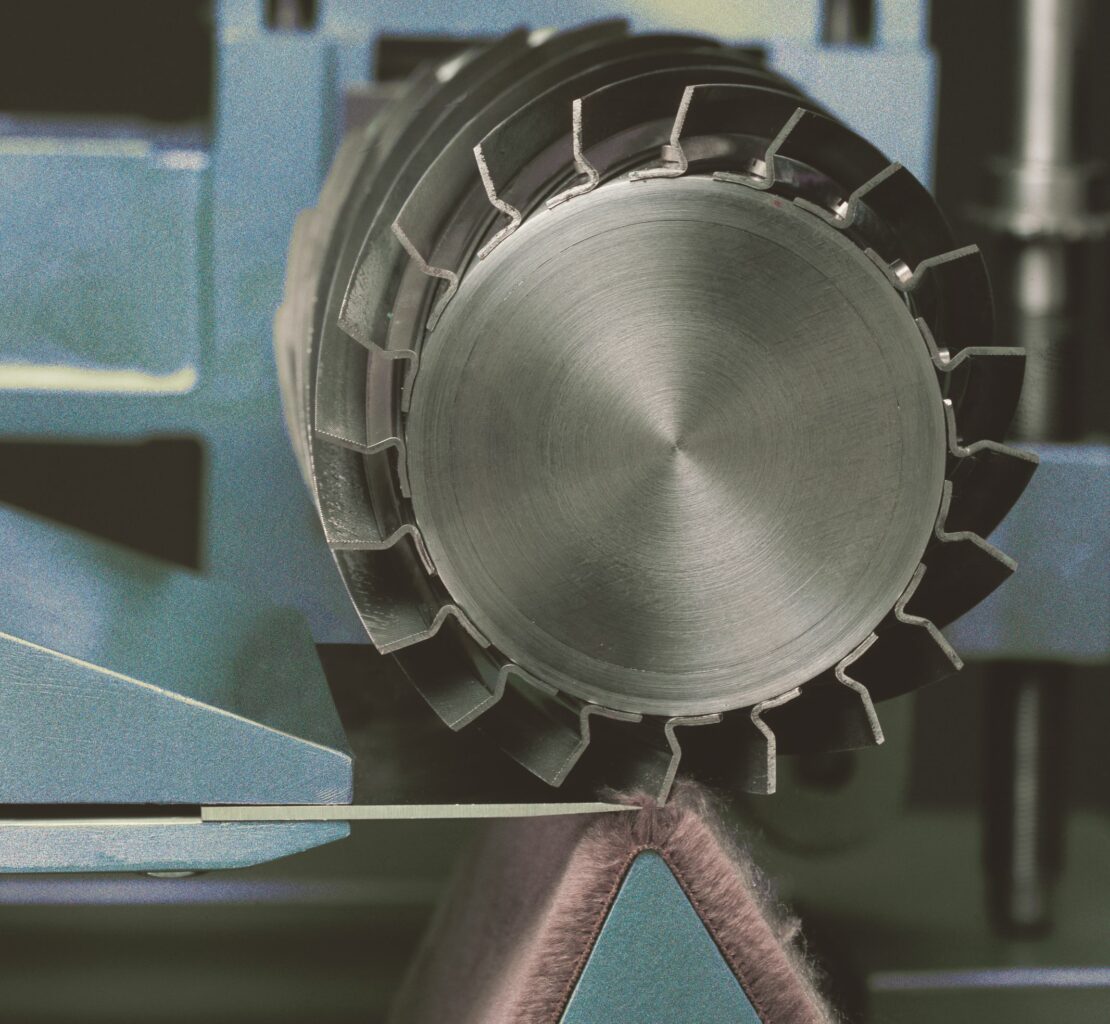
Shearing of tufted textiles with cut pile is an important step in the production process. The aim is to create an even, visually appealing surface. This technology is very demanding. Errors in process control or temperature development lead to an uneven fabric appearance and thus to rejects. At TFI, for example, it is analysed how the decisive parameters affect the shearing result. Thus, conditions for a precisely fitting, significantly improved process reliability and a visually flawless product are created.
Learn moreCoating
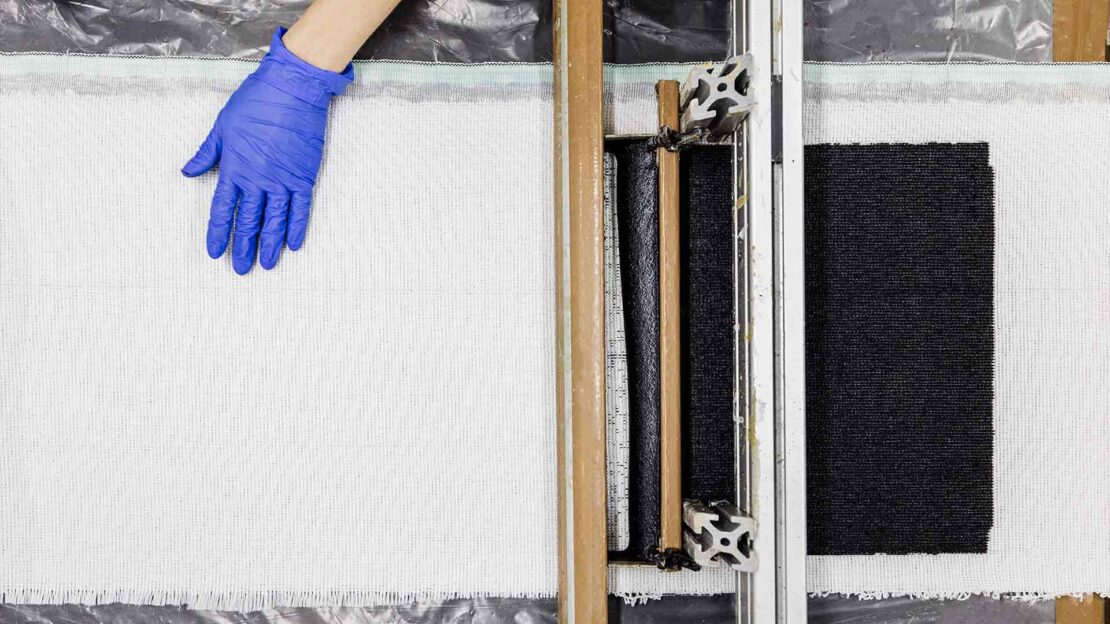
The coating of a product has an impact on its durability, functionality and quality. In our coating laboratory, we coat the back of tufted products such as carpets, for example, to bind the pile and apply secondary backings. This coating ensures the durability and stability of textile surfaces. With our squeegee system we test additional features such as stain and flame protection or antistatic agents against electrical charge.
Learn moreCalendering
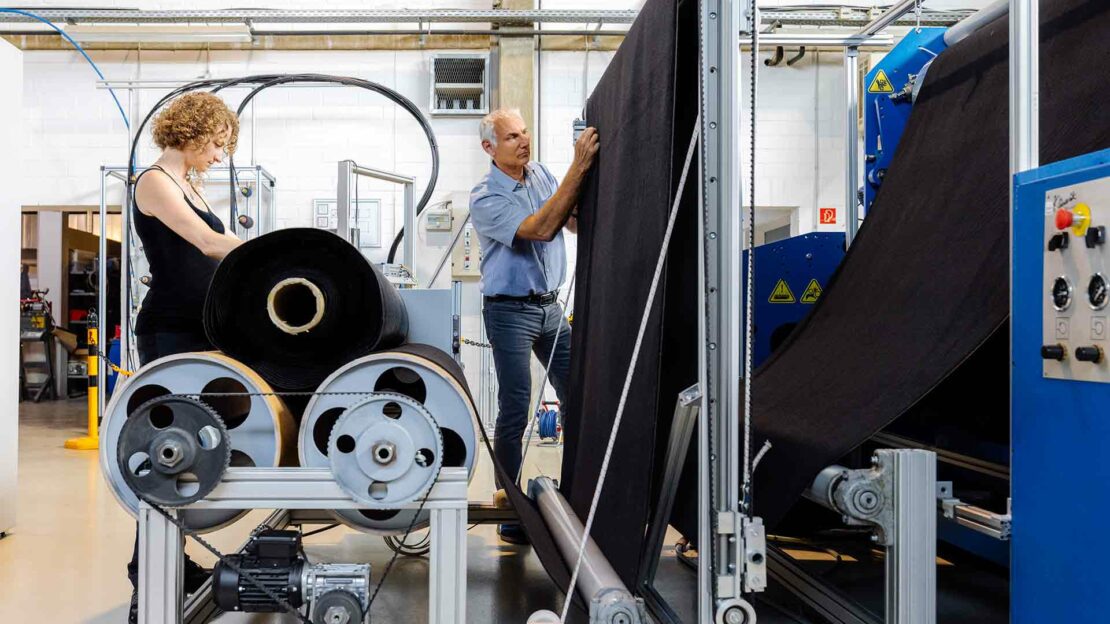
In the field of surface modification of textiles, heat treatment (calendering) is an essential process step that has a significant influence on the function and the desired application. We analyse and optimise existing process windows and develop innovative products based on new material combinations.
The implementation and testing is carried out on our pilot plant in close cooperation with users and machine manufacturing companies. This enables a timely transfer of research results into industry.
Thermobonding
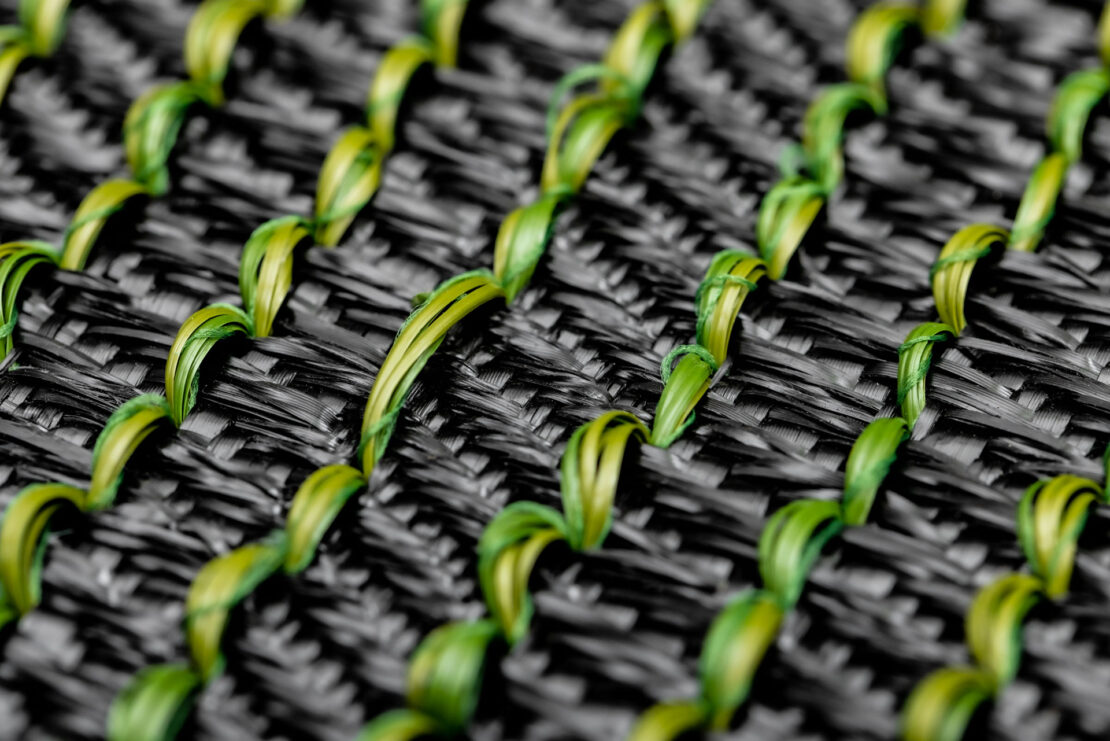
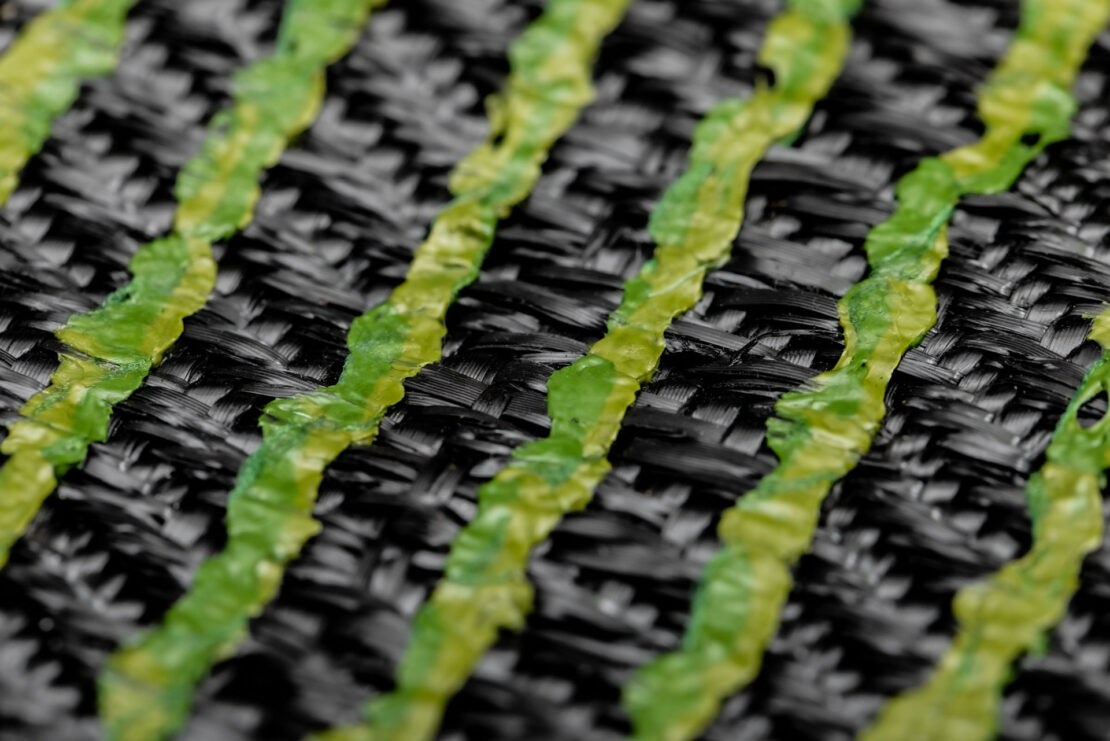
TFI supports the development of new, sustainable and recycling-friendly products based on the thermobonding process. With the help of this process, a consolidation of thermoplastic materials can be achieved without additional chemicals. On our pilot plant, we can demonstrate the results of our development under production conditions - from small-format samples to run lengths of several hundred metres.
Learn moreLaminating
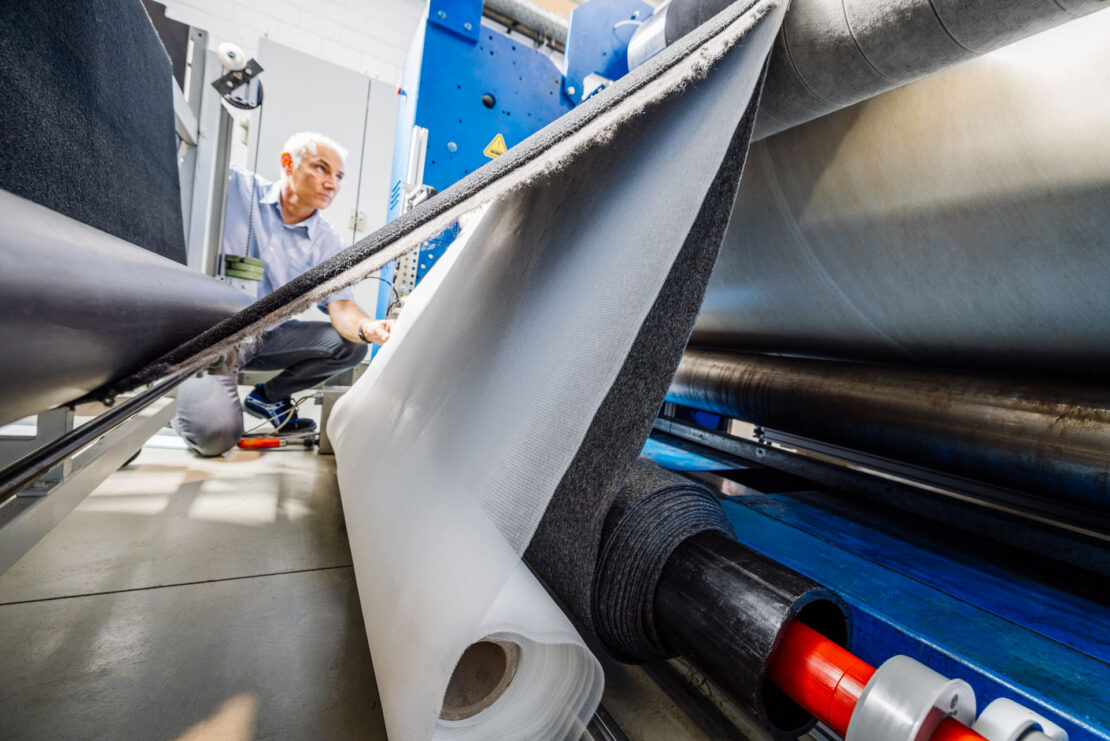
Recyclable and sustainable products require new and innovative (adhesive) materials and joining technologies, especially for composite systems such as floor coverings. Therefore, TFI researches and develops both in questions of wet coating and thermally activated adhesive joints. The results are tested in our laboratories and pilot plants together with industrial partners and transferred into industry.
Learn moreMolding and Pressing
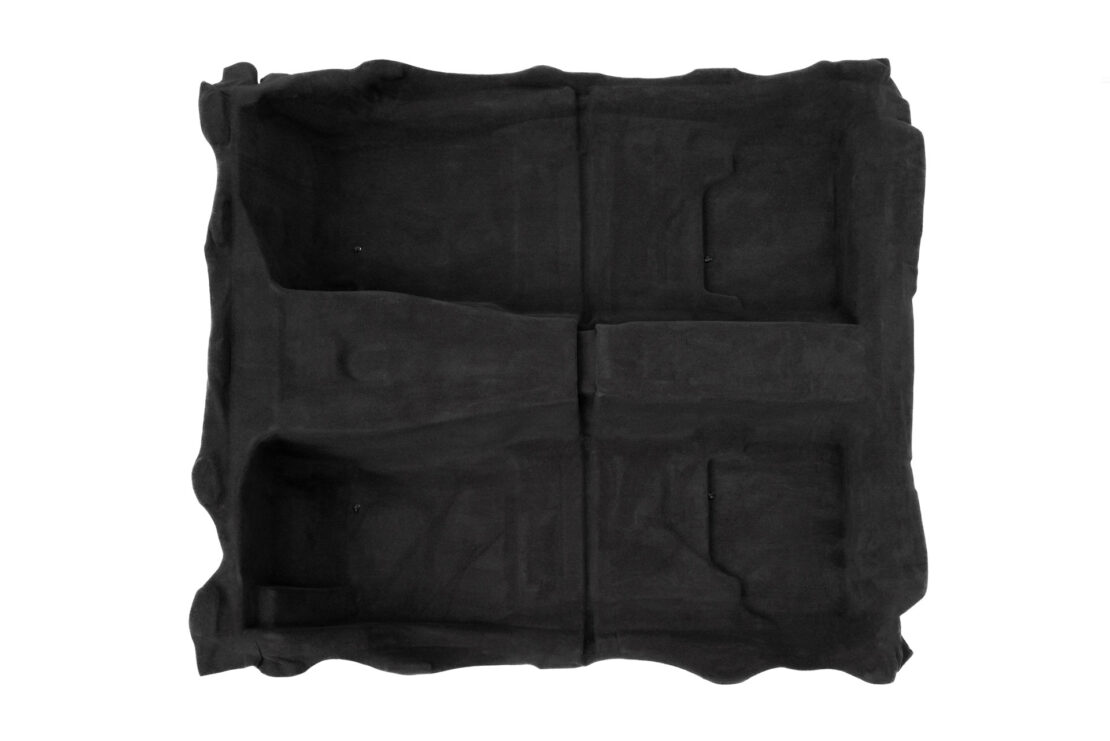
For numerous industrial applications, textile semi-finished products must be formed or pressed, for example for floor assemblies in cars. We develop new material combinations and structures, which we test in our pilot plants and check for functionality and the degree of their formability. This results in material and design recommendations for industrial production that meet the requirements.
Learn moreTest Engineering
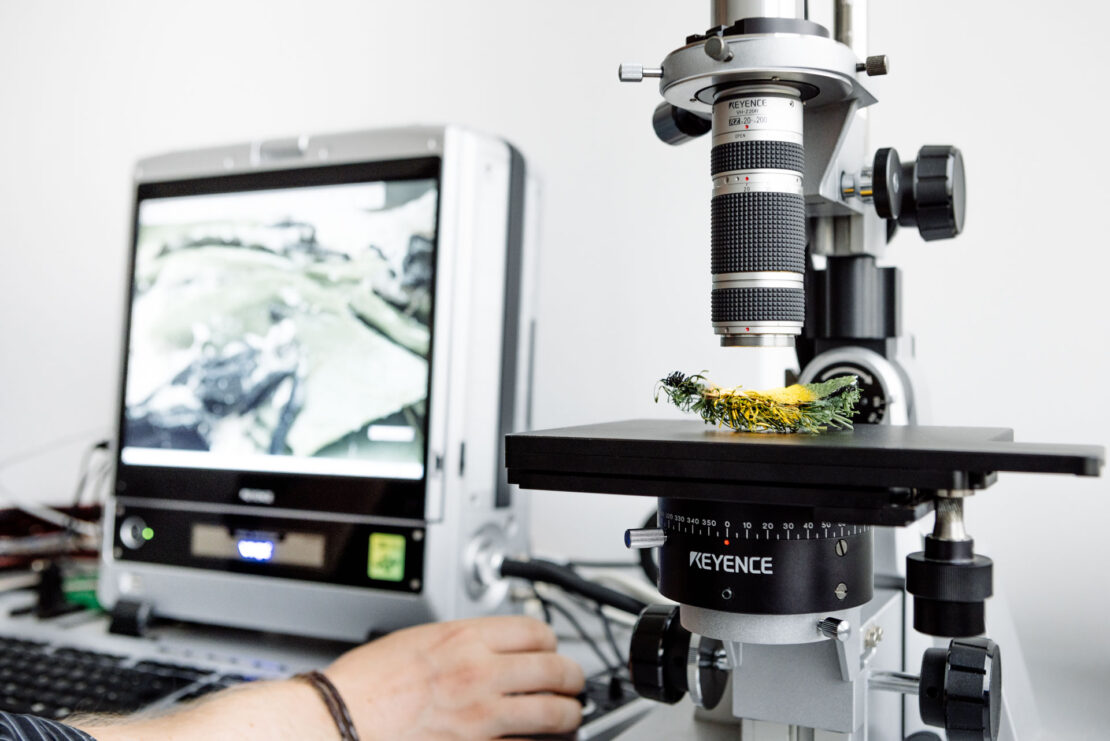
Product tests should meet two challenges. They must simulate actual practical conditions as well as possible. And they have to adapt to the constantly changing product range. We can guarantee that. We combine your practical experience with our knowledge of product testing and equipment development. This provides you with accurate test results for product development, production monitoring and consumer safety.
Learn moreYOUR CONTACT PERSON
